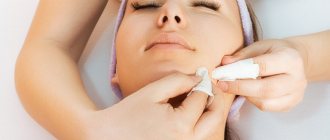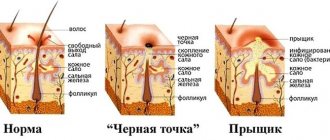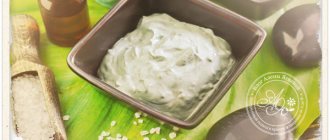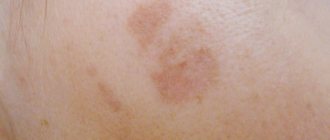Corns with a rod: causes of appearance
A corn is an area of rough skin on the foot that does not have a clear outline. During life, for various reasons, lumps may appear on the feet. The keratinized area may or may not have a core. Corns appear regardless of gender . The rod may become inflamed, which will land you in the hospital.
Reasons for the formation of corns on the soles of the feet:
- papillomatous virus
- fungal infections
- flat feet
- foot injuries
- synthetic socks
- tight shoes
- high heel
Most often, of course, it’s not a matter of viruses, but rather uncomfortable, constricting shoes that disrupt the process of skin hematopoiesis in especially narrow places. The skin on them gradually becomes keratinized. However, there are a number of other reasons causing this problem:
- diabetes
- obesity
- diseases of internal organs
- rheumatoid arthritis
- sports activities (ballet, running, jumping) or similar work
These are all the reasons that, to one degree or another, contribute to the formation of corns, including those with a stem.
The effectiveness of treatment is determined by the effect on the cause of the disease, and not on the symptoms. Therefore, we need to start identifying and eliminating the causes .
- Change shoes to roomier ones
- Heels are recommended occasionally, and everyday shoes should have a rise of no higher than 5 cm
- Give preference to shoes and socks made from natural materials
- If you have flat feet, go to an orthopedist
- Get tested for fungal infections
- Get tested for HPV (papilloma virus)
If you exclude from the list of reasons the presence of various diseases, flat feet, injuries, then you can begin treatment with ointments and traditional medicine. If you have diseases, then it is better to treat the corns with a rod with a doctor.
Preparations for the treatment of corns with a rod
At home, corns can be treated with various pharmaceuticals that do not require special skills. Before use, always read the instructions and follow them carefully. Typically, ointments, as well as liquids and patches are used to treat corns with a core.
Pharmacies today offer a wide selection of ointments to solve this problem:
- salicylic ointment is excellent for various types of calluses and corns with a core, disinfects, heals, softens corns
- a drug with lactic and salicylic acid “Superantimozol” treats corns gently but effectively
- ointment "Nemozol" contains salicylic and glycolic acid, they together give a good effect
- The popular remedy “Lekar” is rich in vitamin E, extracts of oak bark, celandine and urea. You can treat neglected corns.
- Bensalitin ointment softens the corns and it comes off after a few days. This effect is provided by salicylic and benzoic acids.
It should be taken into account that the best effect of the ointment is achieved if it is applied to steamed feet and only to the affected area. A few hours after applying the ointment, rub the corn with a pumice stone. This way you will remove the layer of skin softened by the ointment. Ointments usually need to be applied for 10–14 days in a row , daily.
To treat corns with a core, other stronger drugs are also used, for example, liquids. They consist of a concentrated mixture of acids. Therefore, they must be used very carefully to avoid getting burned. And, of course, plasters. There is no need to “tinker” with them too much. They steamed the skin, stuck on a patch and that’s it. There is only one nuance here. They are impregnated with salicylic acid, so they should only be applied to the corn. If required, simply cut to size and stick on.
What does a callus look like?
How can you tell if a callus has a core?
It is easy to recognize such a formation by its appearance. It is a rounded, whitish, yellow or yellowish-gray compaction slightly raised above the skin. In the center there is a small depression or “pit” that resembles a cork. This is the top of the stem, which can be compared to the head of a carnation.
The rod can grow deep evenly, perpendicular to the surface of the skin, or at an angle. Depending on the severity, its length ranges from several millimeters to centimeters. There are often cases when the rod reaches the subcutaneous fat and even the bones of the foot.
How the core callus passes under the skin, look at the photo:
At rest, the callus is not felt between the toes, on the heel or anywhere else. But it causes intense pain while walking, often causing forced gait disturbance and lameness. Pain occurs due to contact of the rod with nerve endings that penetrate the deep layers of the dermis. Many patients compare the unpleasant sensations arising from a callus to the feeling of a splinter being stuck into the foot.
You can independently suspect a growth based on the following signs:
- the formation is small in size, has a rounded clear outline, smooth edges;
- The color of the callus is yellowish, the structure feels dense to the touch;
- change in skin pattern;
- dull pain or discomfort when walking if the callus is located on the foot;
- increased pain when pressed.
This type of compaction develops slowly. In the early stages, its formation can be detected by slight redness of the injured area, itching, and tingling. If a rounded, convex area with a dimple in the center appears on the skin, this already indicates that the callus has a core.
Treatment of corns with a core using folk remedies
Traditional medicine has enough means to treat corns with a core at home. However, who can say whether they will be effective in your case? In any case, this does not incur any special costs.
The very first thing you should do regularly is various foot baths. This procedure is also suitable for the prevention of calluses and corns.
Baths with soap and soda composition
This is the simplest procedure. Take a liter of hot water, scoop up a tablespoon of laundry soap and dissolve it in water along with 3 tsp. soda Soak your feet in the water for about 30 minutes. After the bath, you can remove the softened layer of skin and apply cream.
Baths with potassium permanganate
Such baths are used for fresh and painful corns. Pour one tablespoon of ordinary salt and a few crystals of potassium permanganate into the water. Soak your feet in the pink solution for 20 minutes. After the procedure, we do not wipe our feet. The pain should subside.
Whey baths
Before the procedure, prepare an infusion of calendula, decorative thuja and St. John's wort, taken in equal proportions. For example, for 0.5 liters, one small spoon. Boil for 1 minute. Then take a bath. You need to warm up the serum and soak your feet in it for about half an hour. Then apply a mask of glycerin and castor oil (equal mixing proportions) to dry feet. Then drink the infusion.
Cold baths with salt
The product is effective, but it can be used as you yourself understand in the summer and the water temperature should be at room temperature. Add 1 tbsp per liter of water. regular salt. Keep your legs for 30 minutes. Oddly enough, such a bath effectively softens corns.
Lotions and compresses for corns
In addition to water procedures, you can use various types of lotions . Eg:
- Boil a few pitted prunes in milk. For half an hour, apply prune “berries” to the problem area while they are hot.
- After a hot bath, apply a piece of lemon with zest to the corns. Repeat for about a week, then after another hot bath, remove the callus from the sole.
- Finely grated raw potatoes are wrapped in gauze and attached to the seal overnight. In the morning after the water procedure, remove the soft skin. The lotion can be done more than once.
- Aloe lotion is very effective. At night, fix a piece of aloe leaf on the callus. In the morning, remove your problem without difficulty and pain.
Compresses with different ingredients also give results .
- Make a compress with onions at night. Place onion rings on the seal and wrap in plastic. Bandage it, put on socks. In the morning, wash your feet, remove excess skin with a pumice stone and treat with talcum powder.
- The same technology, but instead of onions, use store-bought tomato paste.
- Propolis effectively combats this problem. They even remove advanced calluses. In the morning, heat and mash a piece of propolis. Place it on the callus, wrap the foot in polyethylene, and bandage it. Get dressed and go about your business. In the evening we take a hot bath, clean the soles with pumice and apply propolis at night. Within a week you will get rid of the problem.
- For this compress you will need a living plant - celandine. At night, apply the paste of leaves to the affected area, insulate it with cellophane, cloth, and put on a sock. In the morning, wash the sole with water and clean it with a pumice stone. The procedure is repeated until the callus or corn disappears.
If you've tried everything and nothing helps, go to the doctor. Modern medicine offers professional procedures for getting rid of corns with a rod, namely:
- surgical intervention
- laser surgery
- cryotherapy
The most popular due to its effectiveness is laser surgery. So, to remove the callus along with the root, only one procedure is required. Healthy skin is not damaged. After removal, it is necessary to follow a rehabilitation regime . During this period, a special bandage is worn, and the insoles in shoes are replaced with orthopedic ones. After some time, healthy skin will appear in place of the corns. Don't forget that your main task now will be prevention so that the problem does not recur.
Cryotherapy is also used to treat corns, especially those that are old or have a long stem. The seal will be treated with liquid nitrogen, so it is possible that it will be a little painful. There is also a risk of damaging healthy tissue.
Surgical removal is done with a familiar scalpel and local anesthesia.
Prevention of the appearance of corns with a rod
The best way to treat any disease is its prevention. It is easier to prevent a painful condition than to treat it. Therefore, even if you have never had calluses or corns, taking preventative measures will help you continue to live peacefully without them. Well, if you have already overcome the problem, you all the more need prevention so that the corns do not appear again.
Preventive measures include actions to care for the skin of the feet. Take baths twice a week and use foot creams regularly. Choose comfortable shoes for your feet. Don't gain excess weight, correct your posture and gait. Watch your health. Now you know what diseases can cause the appearance of corns. If you are involved in active sports that place a lot of pressure on your feet, also take preventive measures, give your feet more rest. And be healthy.
Corns on the feet
What complications can there be?
The callus never goes away on its own and is difficult to treat.
If you do not remove it completely, the following unpleasant consequences arise:
intense pain;- limitations in working capacity and walking;
- formation of deep cracks;
- deformations of muscle tissue, joints;
- callus infection, suppuration, osteomyelitis, erysipelas, abscess, blood poisoning.
Reviews
Onion compress??? Well I do not know…. This is more suitable for grannies. I can’t even imagine my husband’s reaction to the smell of onions. I apply salicylic ointment and everything goes away in a week, and there is no smell of anything.
Mila
A corn with a core is a problem! There is one popular method, but not everyone can handle it. Grind a few cloves of garlic with vinegar and flour. It turns out to be a paste. It should be applied only to the corn, bandage it tightly and walk like this for several days. All your corns will come out by the roots.
Albina
I didn’t bother with traditional recipes, I just went to the doctor and I don’t regret it. And, by the way, it’s inexpensive.
Gennady
I used a potato compress . Oddly enough, it helped me.
Sveta
What's the point of making some strange mixtures yourself now????
When pharmacies sell not even individual effective products, but kits that contain everything you need? Alla











